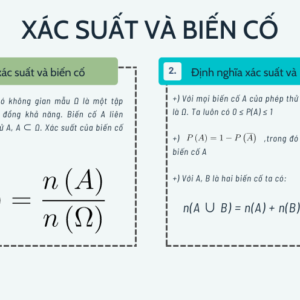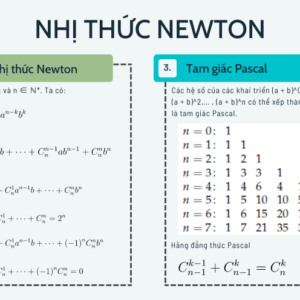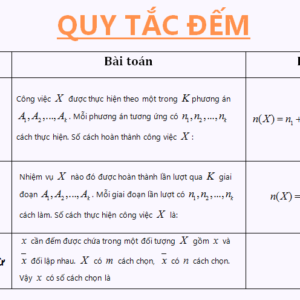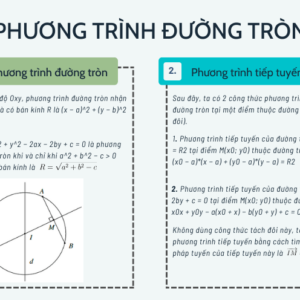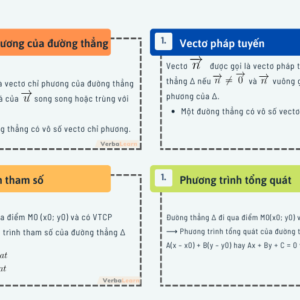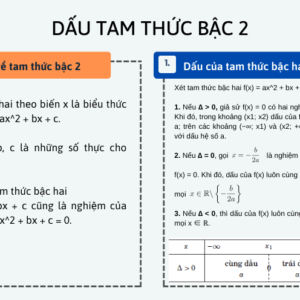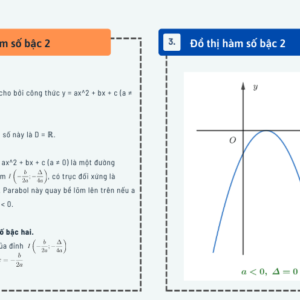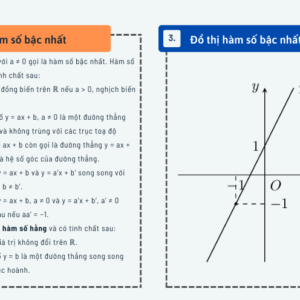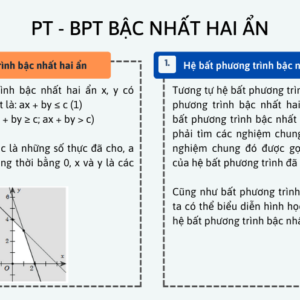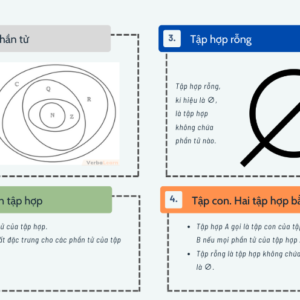Bạn đang xem bài viết Các dạng đặc trưng và cách giải. Hi vọng sẽ là đáp án bạn ưng ý. Cùng theo dõi nhé!
Để giải được bất phương trình chứa căn thức chúng ta cần vận dụng nhiều kỹ năng như biến đổi căn thức, xét dấu đa thức, … Và đây là một trong những dạng toán có khá nhiều biến thể mà các bạn học sinh cần lưu ý.
Trong bài viết này, Cấp Nước Lào Cai sẽ giúp bạn đọc tìm hiểu chi tiết một số dạng bất phương trình căn thức thường gặp và cách giải có logic nhất. Từ đó bạn sẽ không cảm thấy khó khăn ở phần này nữa và việc giải quyết các bài toán cũng nhanh chóng và chính xác hơn.
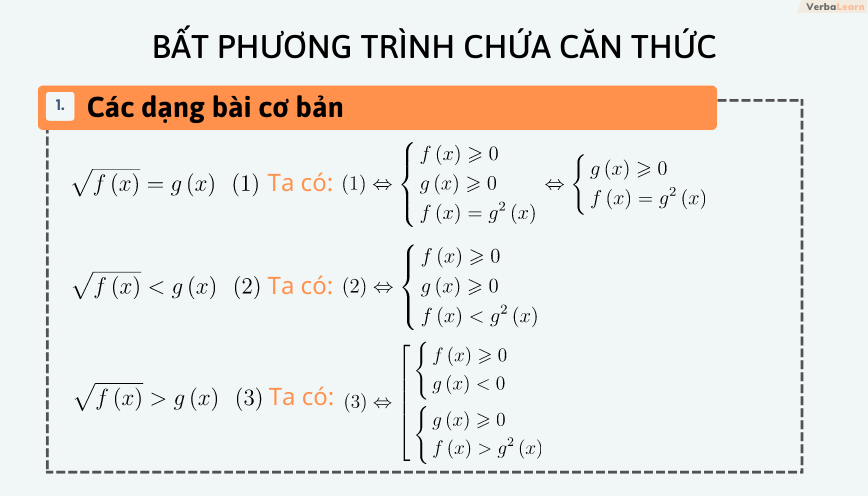
Biến đổi phương trình và bất phương trình chứa căn
. Ta có:
. Ta có:
. Ta có:
Phân dạng bài tập
Dạng 1. Phương trình và bất phương trình chứa căn thức cơ bản
Câu 1. Giải các phương trình sau:
a)
b)
c)
Hướng dẫn giải
a) Xét phương trình:
b) Xét phương trình:
c) Xét phương trình:
Rõ ràng VT (2) > 0, ∀x ≥ 0. Vậy hệ (1) (2) vô nghiệm.
Suy ra phương trình đã cho vô nghiệm.
Câu 2. Giải các phương trình sau:
a)
b)
c)
d)
e)
f)
Hướng dẫn giải
a) Xét phương trình:
(1)
Đặt y = x2 + 5x, khi đó (1) có dạng:
Từ đó trở về biến cũ ta có:
b) Xét phương trình:
(1)
Đặt y = x2 + x + 1, khi đó (1) có dạng:
Từ đó trở về biến cũ ta có:
c) Xét phương trình:
(1)
Vậy nghiệm của phương trình đã cho là x = –1 và x =
d) Xét phương trình:
(1)
Ta có:
+) Nếu x ≥ 2, khi đó . Vậy:
+) Nếu 1 ≤ x < 2, khi đó . Vậy:
Vậy nghiệm của phương trình đã cho là 1 ≤ x ≤ 2
e) Xét phương trình:
(1)
Ta có:
+) Nếu x ≥ 10, khi đó . Vậy:
+) Nếu x ≤ 5, khi đó . Vậy:
+) Nếu 5 < x < 9, khi đó . Vậy:
Vậy nghiệm của phương trình đã cho là 5 ≤ x ≤ 10
f) Xét phương trình:
(1)
Điều kiện là:
Do nếu x0 ≥ 1 là nghiệm của (1) thì –x0 cũng là nghiệm của (1)
Vì thế tạm xét (1) với x ≥ 1
Khi x = 1, thì VP (1) = 0; VT (1) ≠ 0 ⇒ x = 1 không phải là nghiệm
Khi x > 1, thì
Vậy
Đặt , thì (2) có dạng:
Vậy phương trình đã cho có hai nghiệm là với
Câu 3. Giải các bất phương trình sau:
a)
b)
c)
d)
Hướng dẫn giải
a) Xét bất phương trình:
Do x2 + 3x + 3 > 0, ∀x (vì ∆ = 9 – 12 < 0) nên
b) Xét bất phương trình:
(1)
Ta có:
c) Xét bất phương trình:
d) Xét bất phương trình:
(1)
Đặt y = 3x2 + 5x + 2, khi đó từ (1) có:
Trở về biến cũ, ta có hệ sau:
Biểu diễn trên trục số ta có:

Từ đó suy ra nghiệm cần tìm là:

Câu 4. Giải các bất phương trình sau:
a)
b)
c)
Hướng dẫn giải
a) Xét bất phương trình:
(1)
Chú ý x ≠ 0 và dùng phép nhân liên hợp ta có:
Vì hệ vô nghiệm, nên suy ra nghiệm của (1) là
và x ≠ 0
b) Xét bất phương trình:
(1)
(2)
Chú ý rằng x2 – 4x + 21 > 0, ∀x ∈ ℝ (do ∆’ = 4 – 21 < 0)
Vì lẽ đó và do , ta có:
Lại do: x2 – 4x + 20 > 0, ∀x ∈ ℝ (do ∆’ = 4 – 20 < 0), nên (3) ⇔ x + 1 < 0 ⇔ x < –1
c) Xét bất phương trình:
(1)
Thực hiện phép nhân liên hợp ta có:
Giải hệ trên ta có:
Nhận xét:
Trong 3 Câu trên chúng ta đều sử dụng phương pháp nhân liên hợp để đơn giản quá trình giải.
Câu 5. Giải các bất phương trình sau:
a)
b)
c)
Hướng dẫn giải
a) Xét bất phương trình:
Do 5 + x ≥ 0 khi x ≥ –5 (lúc đó ), nên
Đó là nghiệm của (1).
b) Xét bất phương trình:
(1)
Điều kiện x ≥ 1. Đặt:
Khi đó (1) có dạng:
Do x ≥ 1, nên . Vì thế:
Trở về biến cũ ta có:
Vậy nghiệm của (1) là 1 ≤ x ≤ 2 và x ≥ 10.
c) Xét bất phương trình:
Ta có:
Miền xác định của (1) là
+) Nếu x = 3 thì VT (2) = VP (2) = 0 ⇒ x = 3 loại
+) Nếu x > 5, khi đó và
Từ đó ta có:
+) Nếu x < –5, khi đó viết lại (2) dưới dạng:
Vì và
Vậy nghiệm của hệ phương trình đã cho là
Dạng 2. Quy phương trình chứa căn thức về hệ phương trình không chứa căn thức
Câu 1. Giải phương trình sau:
Hướng dẫn giải
Đặt , khi đó (1) có hệ sau:
Vậy (1) có các nghiệm x = 2; x = –3; x =
Câu 2. Giải phương trình sau:
Hướng dẫn giải
Viết lại (1) dưới dạng tương đương sau:
Đặt , với điều kiện x ≥ –1
Khi đó ta có: x2 + 2 = u2 + v2
Vậy từ (2) có:
Vậy nghiệm của (1) là
Chú ý:
Tương tự ta có bài toán giải phương trình:
Bằng cách đặt ;
Khi đó x2 – 3x + 2 = u2 – v2
Vậy ta dẫn đến:
Câu 3. Giải phương trình sau:
Hướng dẫn giải
Đặt
Từ (1) suy ra hệ:
Ta có: u5 + v5
= (u3 + v3)(u2 + v2) – u2v2(u + v) (do uv = 1)
= (u3 + v3)(u2 + v2) – (u + v)
= [(u + v)3 – 3uv(u + v)][(u + v)2 – 2uv] – (u + v)
Vì thế
Đặt t = u + v, khi đó:
(4) ⇔ t5 – 5t3 + 5t – 123 = 0
⇔ (t – 3)(t4 + 3t3 + 4t2 +12t + 41) = 0 (6)
Mặt khác , do đó từ (6) có
(4) ⇔ t – 3 = 0 ⇔ t = 3
Vậy
Đó chính là nghiệm của (1).
Dạng 3. Sử dụng phương trình tương đương hoặc hệ quả để giải phương trình chứa căn thức
Câu 1. Giải phương trình sau:
Hướng dẫn giải
Ta có:
Vậy (1) có 3 nghiệm x = 2; x = –3; x =
Chú ý: Trong Câu này ta đã sử dụng phép biến đổi tương đương để giải (1).
Câu 2. Giải phương trình sau:
Hướng dẫn giải
Ta có:
Thay (1) vào (2), ta được phương trình hệ quả sau đây:
Bây giờ (3) ⇔ (2x − 1)(x − 1)(3x + 1) = 1
(4) ⇔ 6x3 − 7x2 = 0 ⇔ x = 0 ∨ x =
Do (3) là hệ quả của (1), nên thay x = 0 vào (1), ta có:
Vậy x = 0 bị loại.
Thay x = vào (1), ta có:
Vậy x = là nghiệm duy nhất của (1)
Chú ý: Trong Câu này:
(1) ⇔ (2)
(2) ⇒ (3)
(3) ⇔ (4)
Vậy (1) ⇒ (4). Do (4) là hệ quả của (1), nên sau khi có nghiệm x = 0; x = của (4), ta cần có phép thử lại.
Đây cũng là Câu chứng tỏ rằng, nếu sử dụng phương trình hệ quả mà không có phép thử lại, thì sẽ có thể dẫn đến việc thừa nghiệm.
Câu 3. Giải phương trình sau:
Hướng dẫn giải
Đặt
Ta có: với u ≥ 0 (2)
Thay (1) vào (2) và dẫn đến phương trình hệ quả sau:
u2 – 20 = u
⇔ u2 – u – 20 = 0
⇔ u = 5 ∨ u = –4
⇔ u = 5 (do u ≥ 0)
Vậy (1) dẫn đến phương trình hệ quả sau:
Thử lại x = 3 vào (1) thấy đúng, vậy (1) có nghiệm duy nhất x = 3.
Dạng 4. Hệ phương trình chứa căn thức
Câu 1. Giải các hệ phương trình sau:
a)
b)
Hướng dẫn giải
a) Từ
Ta có
Đặt
Khi đó từ (3) (4) có hệ:
Vậy (1) (2) có hai nghiệm (–9, 25); (5, 4)
b) Từ
Vậy
Vậy hệ (1) (2) có hai nghiệm (10, 6) và (6, 10).
Câu 2. Giải hệ phương trình sau:
Hướng dẫn giải
Điều kiện: . Khi đó:
Vậy nghiệm của hệ (1) (2) là (5, 4)
Câu 3. Giải hệ phương trình sau:
Hướng dẫn giải
Đặt
Ta có:
Vậy từ (1) (2) ta có:
Dễ thấy
Vậy hệ (1) (2) có các nghiệm (8, 8); (8, –8)
Câu 4. Giải hệ phương trình sau:
Hướng dẫn giải
Từ (3) (4) suy ra:
Đặt xy = t, từ (5) có:
Vậy đi đến hệ
Vì thế nghiệm của (1) (2) là (4, 4)
Câu 5. Giải hệ phương trình sau:
Hướng dẫn giải
Điều kiện x ≥ 0, y ≥ 0. Ta có:
Đặt ta có hệ:
Chú ý: Ta phải có , nhưng
Vậy hệ (1) (2) vô nghiệm
Câu 6. Giải hệ phương trình sau:
Hướng dẫn giải
Điều kiện −1 ≤ x ≤ 2, −1 ≤ y ≤ 2
Viết lại hệ (1) (2) dưới dạng tương đương sau:
Vậy (1) (2) có hai nghiệm (–1, –1); (2, 2)
Dạng 5. Sử dụng phương pháp chiêu biến thiên hàm số để giải phương trình và bất phương trình chứa căn thức
Câu 1. Giải phương trình sau:
Hướng dẫn giải
Đặt , với
Khi đó (1) có dạng f(x) = 0, với miền xác định
Ta có:
Vậy f(x) là hàm số đồng biến khi
Ta có f(–1) = 0. Vậy x = –1 là nghiệm duy nhất của (1).
Câu 2. Giải phương trình sau:
Hướng dẫn giải
Viết lại (1) dưới dạng
Hàm số f(x) xác định với mọi x thuộc ℝ. Xét hai khả năng sau:
+) Nếu . Mặt khác:
Vậy f(x) < 0 khi sẽ không thể là nghiệm của (2)
+) Nếu . Khi đó ta có:
Vậy f(x) là hàm đồng biến khi . Mặt khác f(1) = 0
Vậy x = 1 là nghiệm duy nhất của (1)
Câu 3. Giải bất phương trình sau:
Hướng dẫn giải
Viết lại (1) dưới dạng
Ta có:
Vậy f(x) là hàm đồng biến khi x ≥ −2, mặt khác ta có f(0) = 5.
Từ đó suy ra nghiệm của (2) là x > 0.
Câu 4. Giải phương trình sau:
Hướng dẫn giải
Viết lại (1) dưới dạng tương đương:
với miền xác định x ≥
Từ (2) suy ra
Vậy mọi nghiệm (nếu có) của (1) đều lớn hơn hoặc bằng 5. Vì thế xét f(x) với x ≥ 5
Ta có và
là các hàm đồng biến > 0 khi x ≥ 5
Vậy f(x) là hàm đồng biến khi x ≥ 5, mặt khác:
Do đó x = 7 là nghiệm duy nhất của (1)
Câu 5. Giải hệ phương trình sau:
Hướng dẫn giải
Ta có:
Rõ ràng (4) ⇔ f(x) = f(y), ở đây , với 0 ≤ t ≤ 2
Ta có:
Vậy f
Bạn đang xem bài viết Các dạng đặc trưng và cách giải xem thêm các bài viết khác về chủ đề Toán lớp 10. Chúc bạn 1 ngày vui vẻ!

